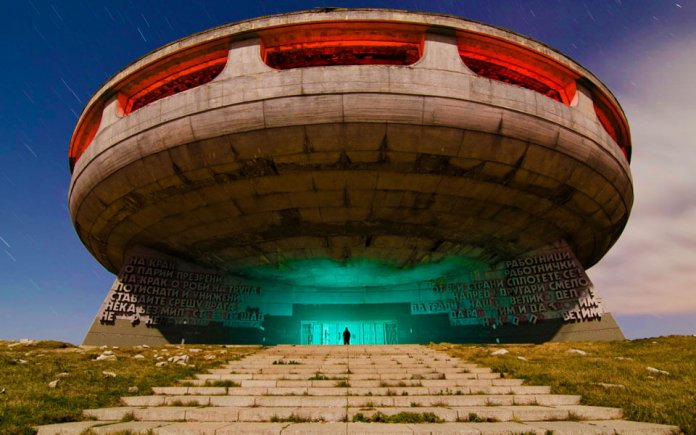The USSR has long remained in memories, for some in nostalgic memories, for others in sad ones. However, the existence of the communist state is still reminded of the numerous relics left from those times - grandiose structures, slowly collapsing under the influence of time.
Introducing you top 10 most unusual abandoned objects of the USSR times.
10. Object 825 GTS, Crimea
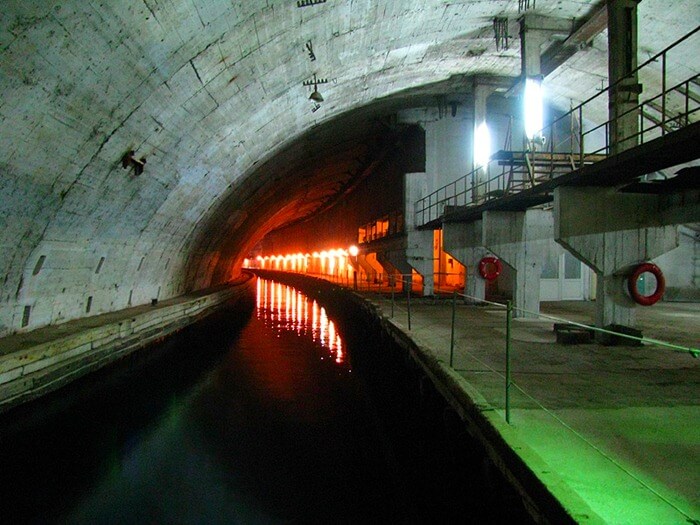 Object 825 GTS is a legacy of the Cold War, when both nuclear superpowers took measures in case of a possible nuclear strike. To create a submarine base, the military chose a quiet secluded bay in Balaklava.
Object 825 GTS is a legacy of the Cold War, when both nuclear superpowers took measures in case of a possible nuclear strike. To create a submarine base, the military chose a quiet secluded bay in Balaklava.
The construction took place in the strictest secrecy: the rock was drilled and taken out at night, after which it was flooded into the sea, and Balaklava was made a closed city. The huge structure (with a total area of 9600 m2) became unnecessary after the collapse of the USSR and was not guarded. For ten years (from 1993 to 2000), non-ferrous metal hunters took out everything that was possible.
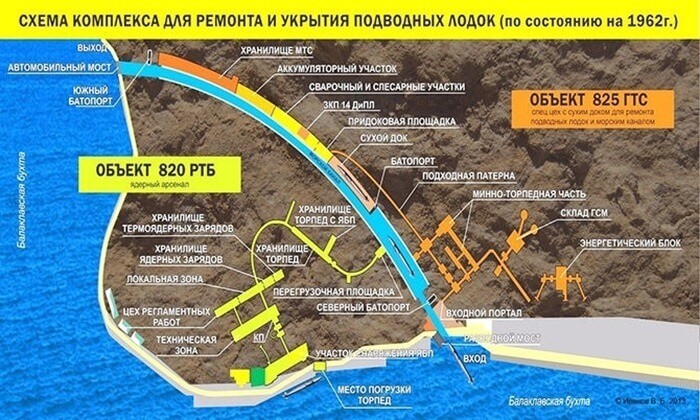 Now the base houses a Cold War museum with a real (albeit an ultra-small) submarine, several exhibitions and an arsenal yard. In 2013, he celebrated his tenth anniversary, and not only adults (veterans-submariners, representatives of the military and the authorities, former employees of the underground plant), but also schoolchildren took part in the anniversary.
Now the base houses a Cold War museum with a real (albeit an ultra-small) submarine, several exhibitions and an arsenal yard. In 2013, he celebrated his tenth anniversary, and not only adults (veterans-submariners, representatives of the military and the authorities, former employees of the underground plant), but also schoolchildren took part in the anniversary.
9. Bunker in Wünsdorf, Germany
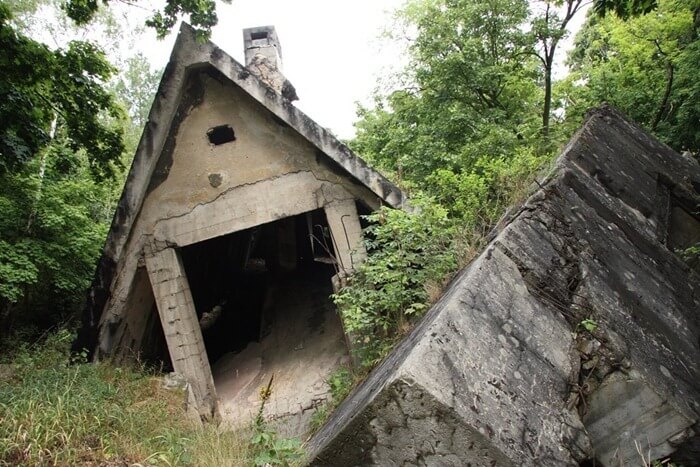 The visiting card of the small German town of Wünsdorf is a bunker built by the Germans before the start of World War II. After the victory, the Soviet command rebuilt it, made it anti-nuclear and placed in it the headquarters of the command of the USSR air forces in Germany.
The visiting card of the small German town of Wünsdorf is a bunker built by the Germans before the start of World War II. After the victory, the Soviet command rebuilt it, made it anti-nuclear and placed in it the headquarters of the command of the USSR air forces in Germany.
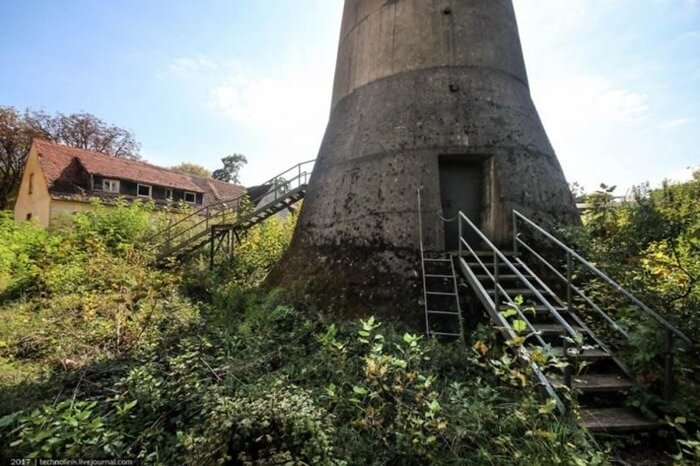 In other times, the population of Wünsdorf numbered up to 60,000 Soviet soldiers. Until September 1994, there was a regular train from the city to Moscow. Together with the last composition, which left on September 8, 1994, Wünsdorf left the so-called reclamation battalion.
In other times, the population of Wünsdorf numbered up to 60,000 Soviet soldiers. Until September 1994, there was a regular train from the city to Moscow. Together with the last composition, which left on September 8, 1994, Wünsdorf left the so-called reclamation battalion.
Now the bunker is the main tourist attraction of the city, where excursions are regularly conducted.
8. Village Pyramida, West Spitsbergen, Russia
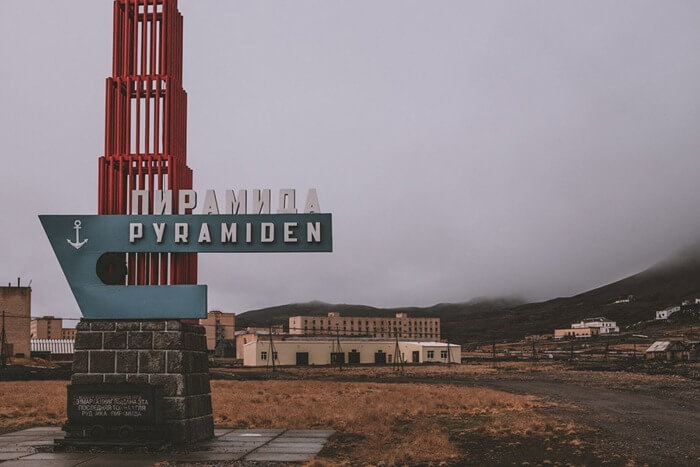 For a long time (from 1946 to 1998), the Pyramid coal mine was the northernmost operating mine in the world. For miners in the Arctic, a whole city was built, including multi-storey residential buildings, a swimming pool, a library, greenhouses, livestock farms, artificial lakes with drinking water and a pool with sea water in the sports center. There were times when up to 1000 people lived in the city.
For a long time (from 1946 to 1998), the Pyramid coal mine was the northernmost operating mine in the world. For miners in the Arctic, a whole city was built, including multi-storey residential buildings, a swimming pool, a library, greenhouses, livestock farms, artificial lakes with drinking water and a pool with sea water in the sports center. There were times when up to 1000 people lived in the city.
In 1997, it was decided to close the mine - coal production became too expensive due to difficult geological conditions, plus a fire that had arisen in the coal seams back in the 70s complicated the development of the deposit. Now the Pyramid is a tourist site where ships from Russia and the Scandinavian countries regularly go.
7. Accelerator storage complex, Protvino, Russia
 UNK, or, as they used to call it, the Protvinsky collider (younger brother TANK) Is one of the last large-scale projects of Soviet science. Its construction began in 1983, and in 11 years a huge tunnel (21 km long, 5 m in diameter) was drilled deep underground with ventilation, lighting and auxiliary rooms for laboratories and equipment.
UNK, or, as they used to call it, the Protvinsky collider (younger brother TANK) Is one of the last large-scale projects of Soviet science. Its construction began in 1983, and in 11 years a huge tunnel (21 km long, 5 m in diameter) was drilled deep underground with ventilation, lighting and auxiliary rooms for laboratories and equipment.
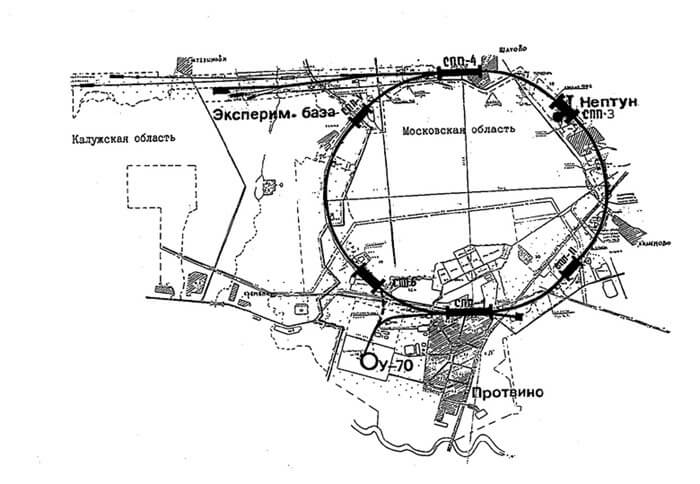 And then the collapse of the Soviet Union broke out, and construction began to experience a lack of funding. But the tunnel had to be closed in a ring, otherwise nearby settlements would have suffered from its collapse. What to do with him now is unclear; It is expensive to convert for use for any other purpose, but even just pouring concrete into the UNK costs a lot of money.
And then the collapse of the Soviet Union broke out, and construction began to experience a lack of funding. But the tunnel had to be closed in a ring, otherwise nearby settlements would have suffered from its collapse. What to do with him now is unclear; It is expensive to convert for use for any other purpose, but even just pouring concrete into the UNK costs a lot of money.
6. Ventspils International Radio Astronomy Center, Latvia
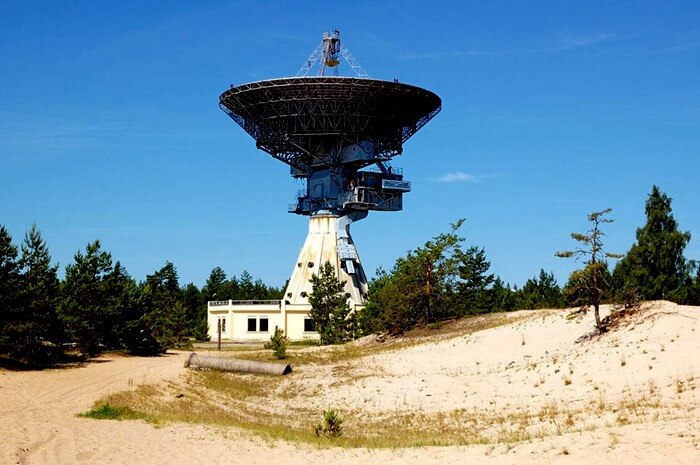 Unlike other relics of the Soviet era, the fate of the observatory has developed well - it is in demand, is used for scientific purposes and is going to enter the radio interference network of Europe.
Unlike other relics of the Soviet era, the fate of the observatory has developed well - it is in demand, is used for scientific purposes and is going to enter the radio interference network of Europe.
Although before the collapse of the USSR, the purpose of the complex was purely military - intercepting signals from military bases and satellites, as well as monitoring satellites. For the sake of servicing and protecting the station, the village of Irbene was even erected, in which two thousand servicemen and members of their families lived.
Curiously, the Irbene radar is one of the most interesting tourist attractions in Latvia.
5. Kola superdeep well, Murmansk region, Russia
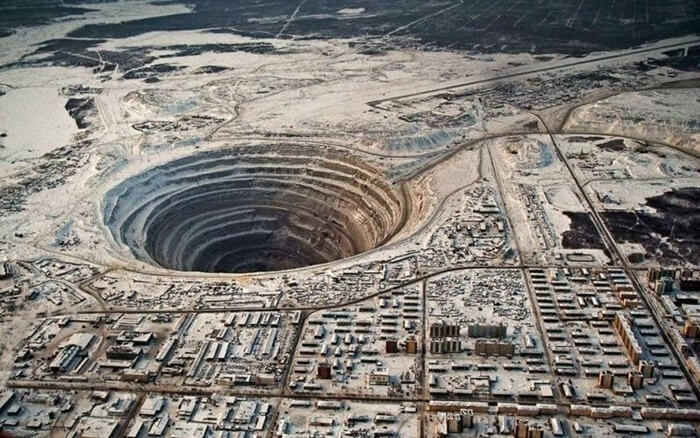 The well, more than 12 km long, is another titanic monument to Soviet science, which became unnecessary after the end of the existence of the Soviet Union. This is one of the deepest places on Earth. Drilling began in 1970 and continued for several years due to repeated accidents in which the drill string was jammed by rock. And when trying to lift, part of the column broke off.
The well, more than 12 km long, is another titanic monument to Soviet science, which became unnecessary after the end of the existence of the Soviet Union. This is one of the deepest places on Earth. Drilling began in 1970 and continued for several years due to repeated accidents in which the drill string was jammed by rock. And when trying to lift, part of the column broke off.
In the old days, up to 16 laboratories worked with the well, and the Minister of Geology of the USSR personally supervised its functioning.
It was the Kola well that served as the basis for the urban legend of the “well in Hell”. Since the end of the 90s of the twentieth century, a bike has been circulating on the Internet that at a depth of 12 thousand meters the microphones of scientists recorded the terrible cries and groans of souls suffering in Hell. This legend formed the basis of Dmitry Glukhovsky's story "From Hell".
Now the state does not need a well - it is too expensive. Both she and the complex serving her continue to slowly collapse. The restoration will cost 100 million rubles.
4. Skrunda-1, Latvia
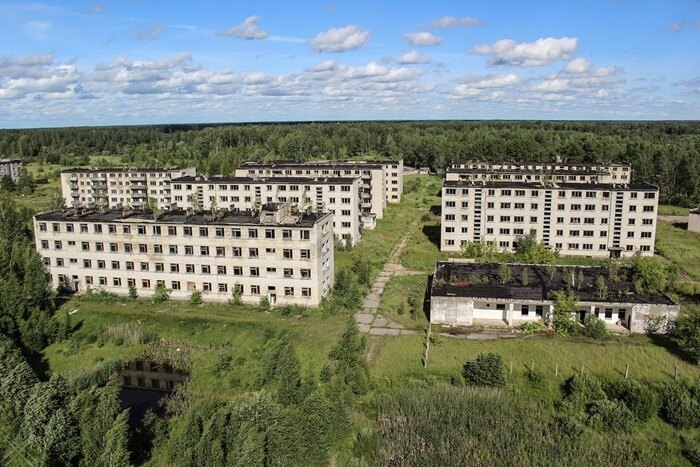 One of the many military towns, abandoned after the collapse of the USSR. Skrunda-1 was created to serve a radar station that tracked the launch of ballistic missiles by NATO countries. The military unit, which was located on the territory of the town, was disguised as a concrete factory. Therefore, it was given the name "Combine".
One of the many military towns, abandoned after the collapse of the USSR. Skrunda-1 was created to serve a radar station that tracked the launch of ballistic missiles by NATO countries. The military unit, which was located on the territory of the town, was disguised as a concrete factory. Therefore, it was given the name "Combine".
 The fate of the military complex is unenviable - in 1995, after the withdrawal of Russian troops, the station was blown up, and the military town fell into disrepair. Now part of it is used by the Latvian military forces to practice combat in the city. And the rest of the Latvian authorities unsuccessfully tried to lease, and then they simply abandoned.
The fate of the military complex is unenviable - in 1995, after the withdrawal of Russian troops, the station was blown up, and the military town fell into disrepair. Now part of it is used by the Latvian military forces to practice combat in the city. And the rest of the Latvian authorities unsuccessfully tried to lease, and then they simply abandoned.
3. Oil stones, Azerbaijan
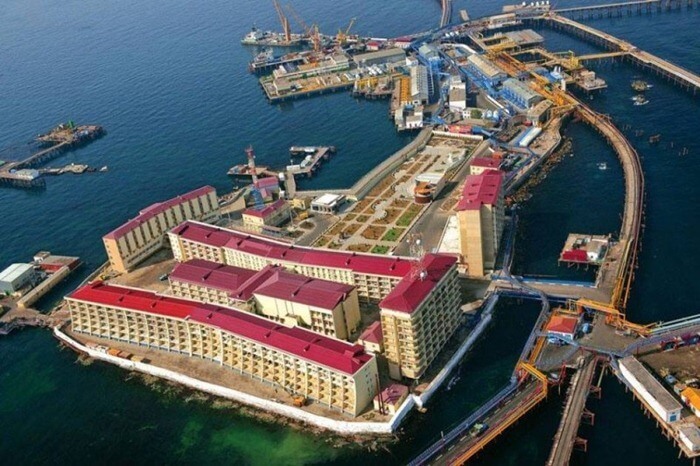 Oil Rocks is the world's oldest oil platform (commenced in 1951). Why, the platform is a whole city on stilts, where the Soviet government tried to create all conditions for the oil workers, including multi-storey residential buildings, hospitals, baths, a bakery, a workshop for the production of soft drinks, a cinema and even a park with trees.
Oil Rocks is the world's oldest oil platform (commenced in 1951). Why, the platform is a whole city on stilts, where the Soviet government tried to create all conditions for the oil workers, including multi-storey residential buildings, hospitals, baths, a bakery, a workshop for the production of soft drinks, a cinema and even a park with trees.
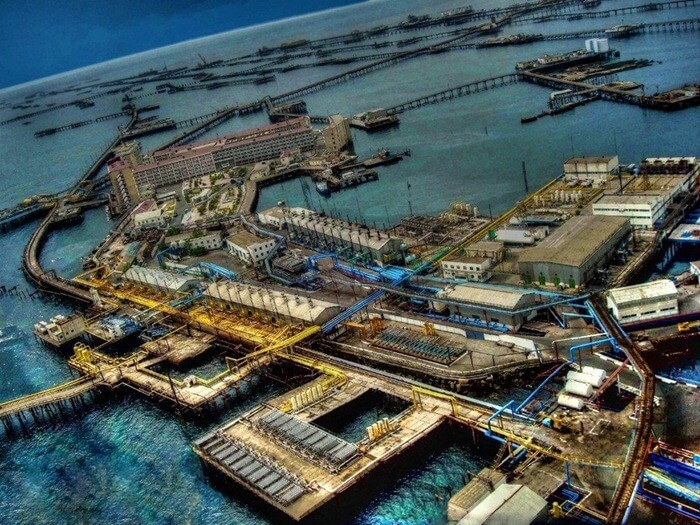 The total number of platforms is more than 200, and the length of streets is up to 350 km. The deposit is alive, and the village is actively used - it is inhabited by up to 1000 people working on a rotational basis.
The total number of platforms is more than 200, and the length of streets is up to 350 km. The deposit is alive, and the village is actively used - it is inhabited by up to 1000 people working on a rotational basis.
2. "Duga", Chernobyl-2, Ukraine
 In second place in the ranking of the most famous abandoned objects of the Soviet era is another large-scale military structure. This radar station located nearby Nuclear power plant in Chernobyl, was engaged in tracking the launch of ballistic missiles. Until now, the antenna masts left from it are an impressive sight - huge, standing in a row.
In second place in the ranking of the most famous abandoned objects of the Soviet era is another large-scale military structure. This radar station located nearby Nuclear power plant in Chernobyl, was engaged in tracking the launch of ballistic missiles. Until now, the antenna masts left from it are an impressive sight - huge, standing in a row.
Of course, the Duga object was top-secret, so on the Soviet topographic maps a kind of "pioneer camp" was located in its place.
 During operation, the station emitted a characteristic knock on the air, which is why the Western military gave it the nickname Russian Woodpecker (Russian woodpecker). In the West, they even considered the "Russian Woodpecker" as a Soviet experimental weapon and studied the station's ability to influence people's consciousness and changes in the weather. And the foreign press frightened readers with the fact that the Russians would be able to destroy up to 5 American cities a day, broadcasting destructive radio pulses.
During operation, the station emitted a characteristic knock on the air, which is why the Western military gave it the nickname Russian Woodpecker (Russian woodpecker). In the West, they even considered the "Russian Woodpecker" as a Soviet experimental weapon and studied the station's ability to influence people's consciousness and changes in the weather. And the foreign press frightened readers with the fact that the Russians would be able to destroy up to 5 American cities a day, broadcasting destructive radio pulses.
However, after the accident at the nuclear power plant, US residents were able to breathe easy. The terrible "Russian Woodpecker" was mothballed, and all equipment was removed from it.
1. Buzludzha, Bulgaria
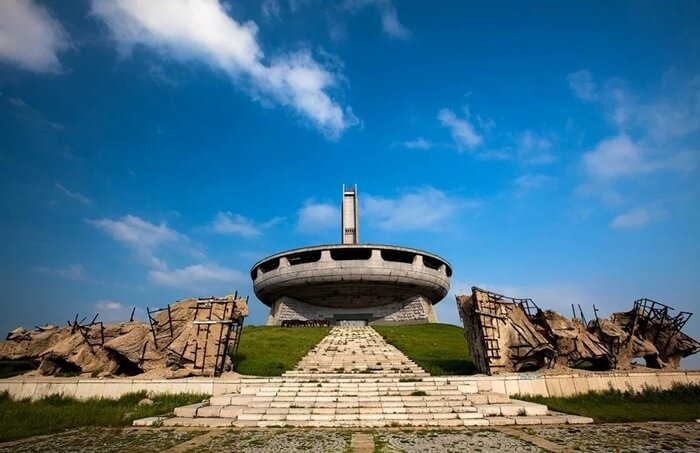 In the 70s, the Bulgarian Communist Party decided to build a memorial complex on Mount Buzludzha dedicated to the Bulgarian revolutionaries. The builders did not confine themselves to one palace - a whole complex of buildings (mainly tourist) was erected next to it.
In the 70s, the Bulgarian Communist Party decided to build a memorial complex on Mount Buzludzha dedicated to the Bulgarian revolutionaries. The builders did not confine themselves to one palace - a whole complex of buildings (mainly tourist) was erected next to it.
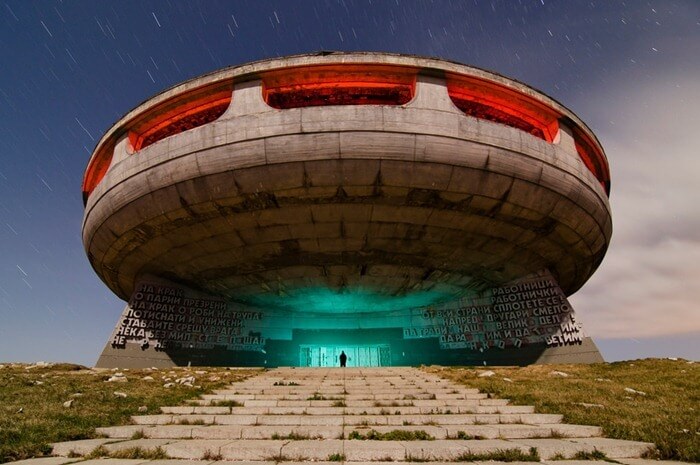 Once upon a time, holidays were held there, festivals were held, drum workers were awarded, and so on. During mass events, free transport was organized for people from nearby cities and villages, and food and drinks were sold at reduced prices.
Once upon a time, holidays were held there, festivals were held, drum workers were awarded, and so on. During mass events, free transport was organized for people from nearby cities and villages, and food and drinks were sold at reduced prices.
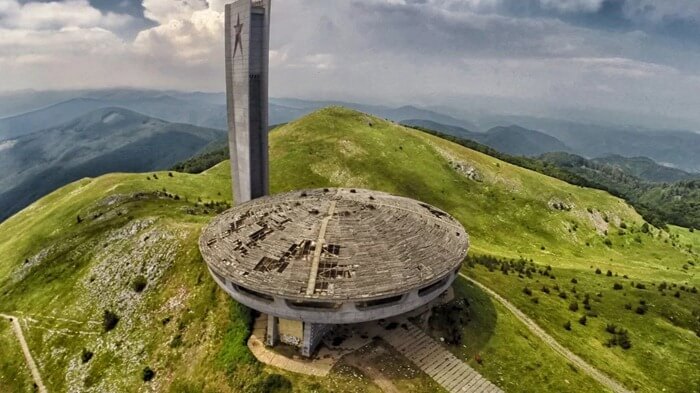
After the end of the existence of Soviet Bulgaria and the beginning of Bulgaria, the modern memorial house, like many relics of those times, was completely looted. Moreover, they stole not only valuable metal, but even stone cladding. Now only the pieces of mosaic remaining on the walls vaguely remind of the former splendor.

